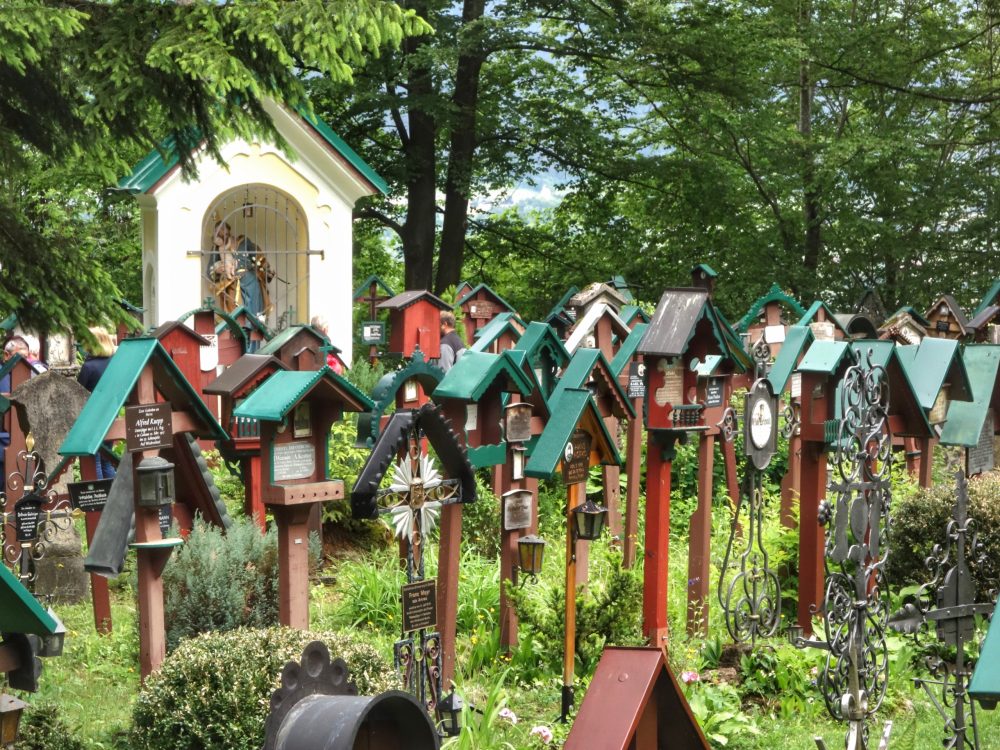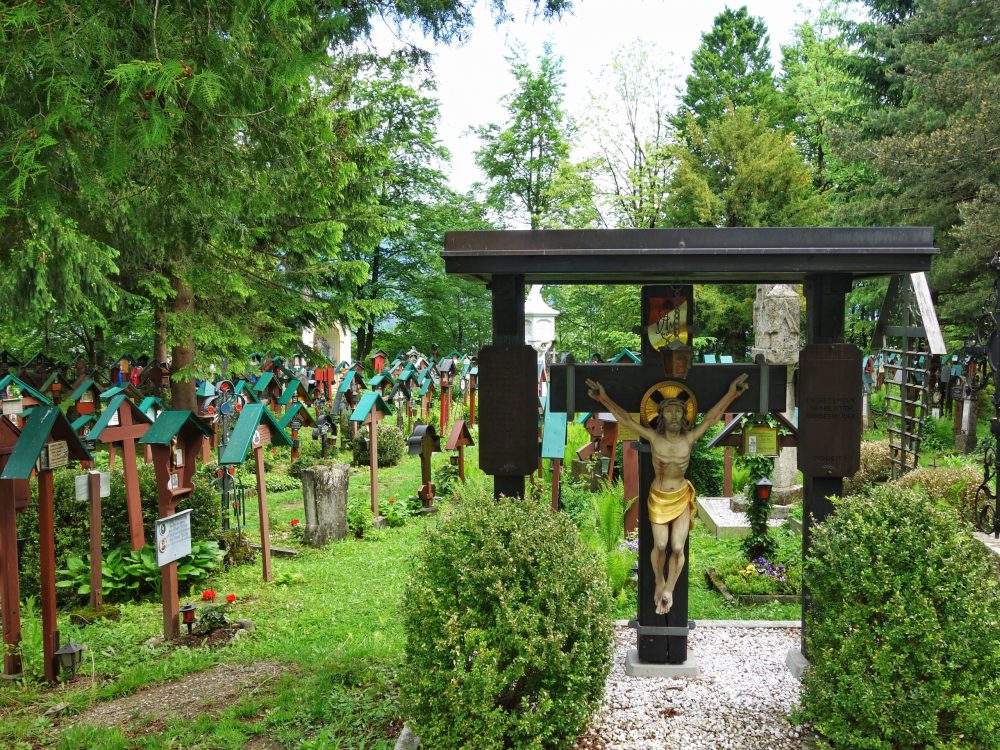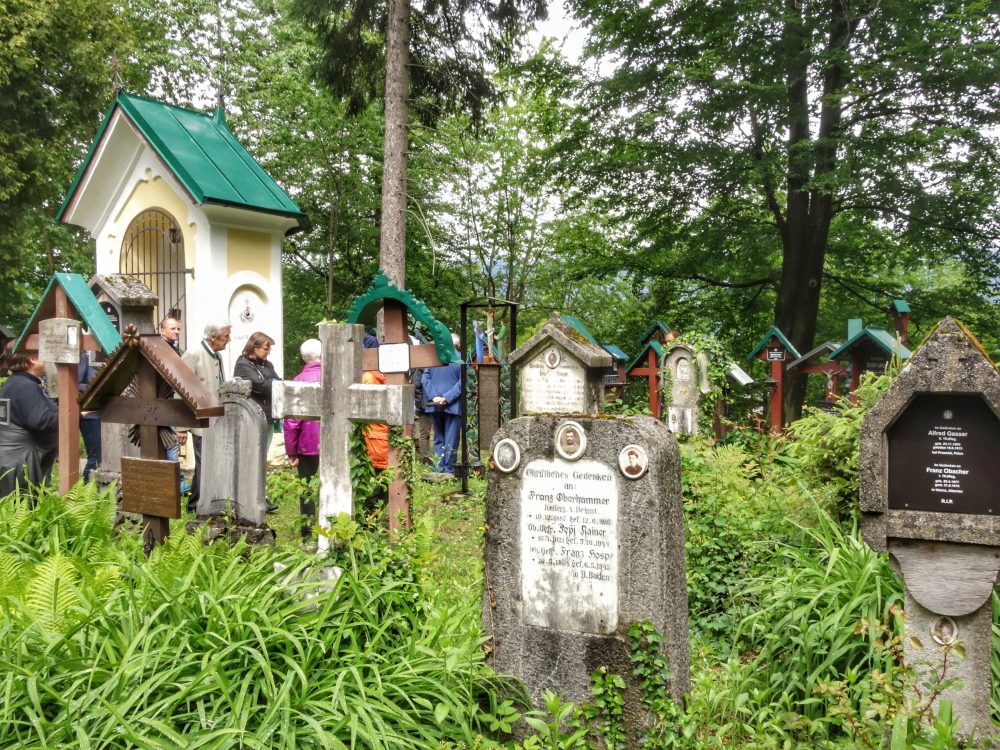I can admit it: the name Tummelplatz meant nothing to me until two weeks ago. What has less to do with my origin as a Vorarlberger. It has more to do with the fact that I have little or nothing in common with cemeteries. It was only a series of events organized by the Innsbruck City Archives that drew my attention to this commemorative jewel. “Tummelplatz, Friedhof und Soldatengräber” was announced as one of nine highly informative City walks to be held this year. The fact that the director of the City Archives, DDr. Lukas Morscher, himself acted as guide was the icing on the cake for me.
-
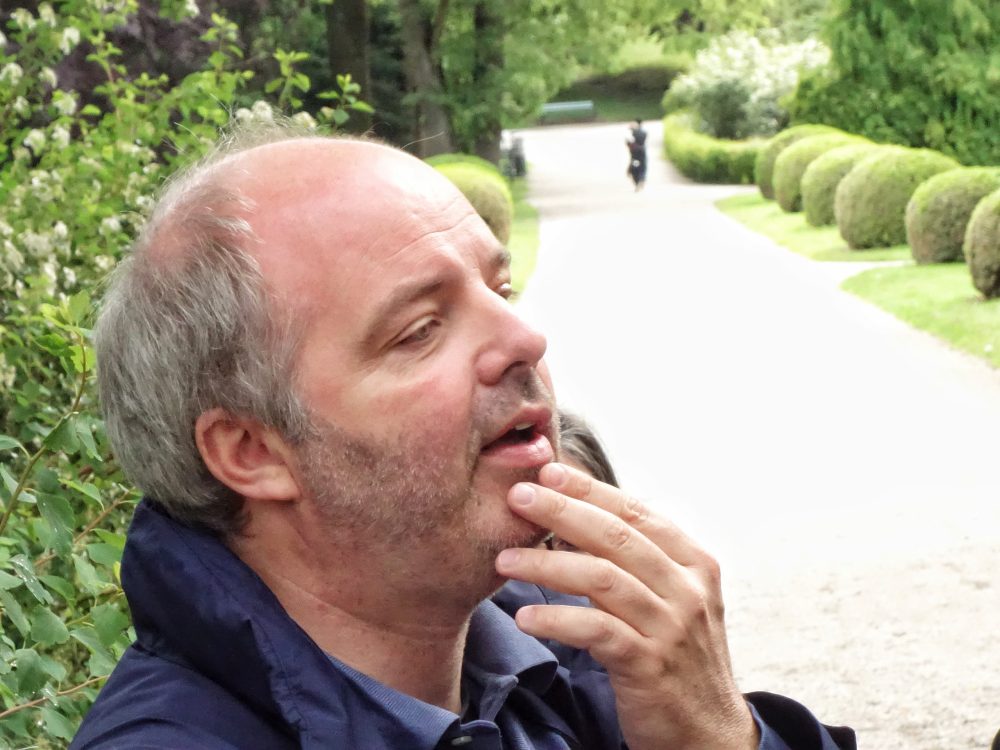
-
DDr. Lukas Morscher, der Direktor des Innsbrucker Stadtarchivs
-
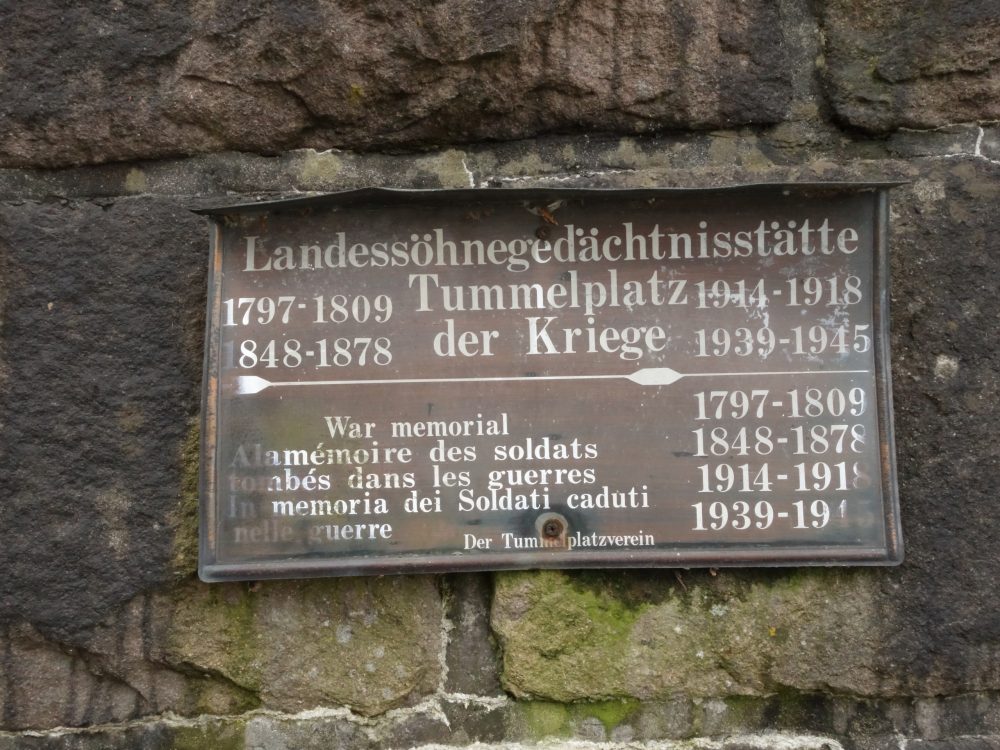
-
Das eher unscheinbare Hinweisschild auf den Soldatenfriedhof
The inconspicuous sign vis-a-vis the entrance to Ambras Castle had already caught my eye earlier. It points the way to the “Country Sons Memorial”a military cemetery. The fact that this site is located in a clearing that once served as a riding arena for the horses of the Habsburgs gave it the name Tummelplatz. It is a grotesquerie of history that since 1796 hundreds of victims of Habsburg cries of lasciviousness have been commemorated there. Young men who had always served the emperors as cannon fodder.
The first hiking trail in Innsbruck led to the Tummelplatz
Even the path to the memorial is somehow historic. It became Innsbruck’s first official hiking trail in 1888 and thus the cornerstone of today’s 74-kilometer network of hiking trails. After barely ten minutes of walking, you then reach what I consider to be the unique anti-war memorial with its more than 1,000 memorial crosses representing at least 2,000 dead. (Other sources estimate the number of those soldiers commemorated here at 7,000-8,000). The last actual burial took place in 1856. The last memorial cross was dedicated to a soldier who succumbed to his wounds in a military hospital in 1947.
-
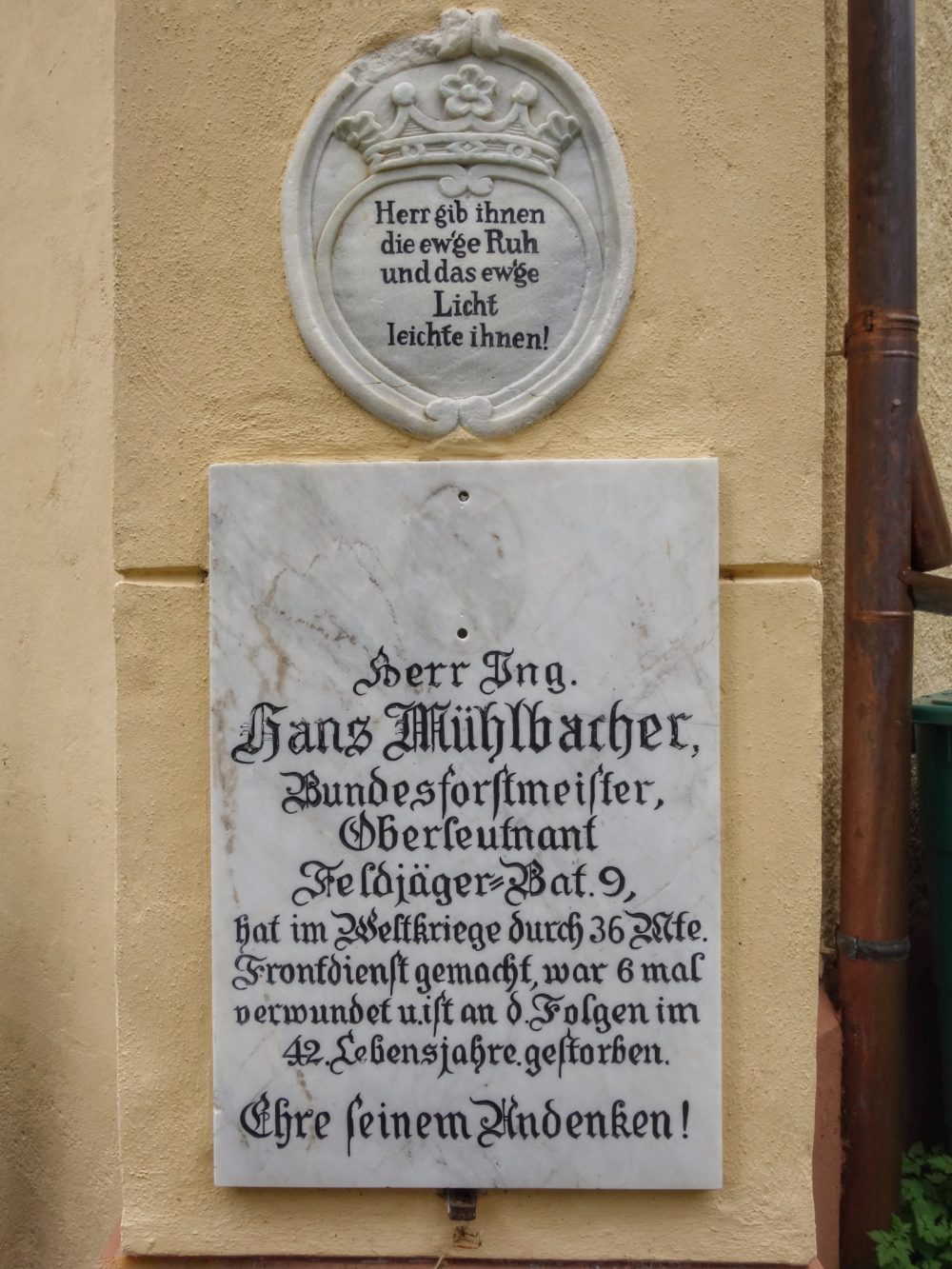
-
Ehrentafel an der Kapellenmauer
-
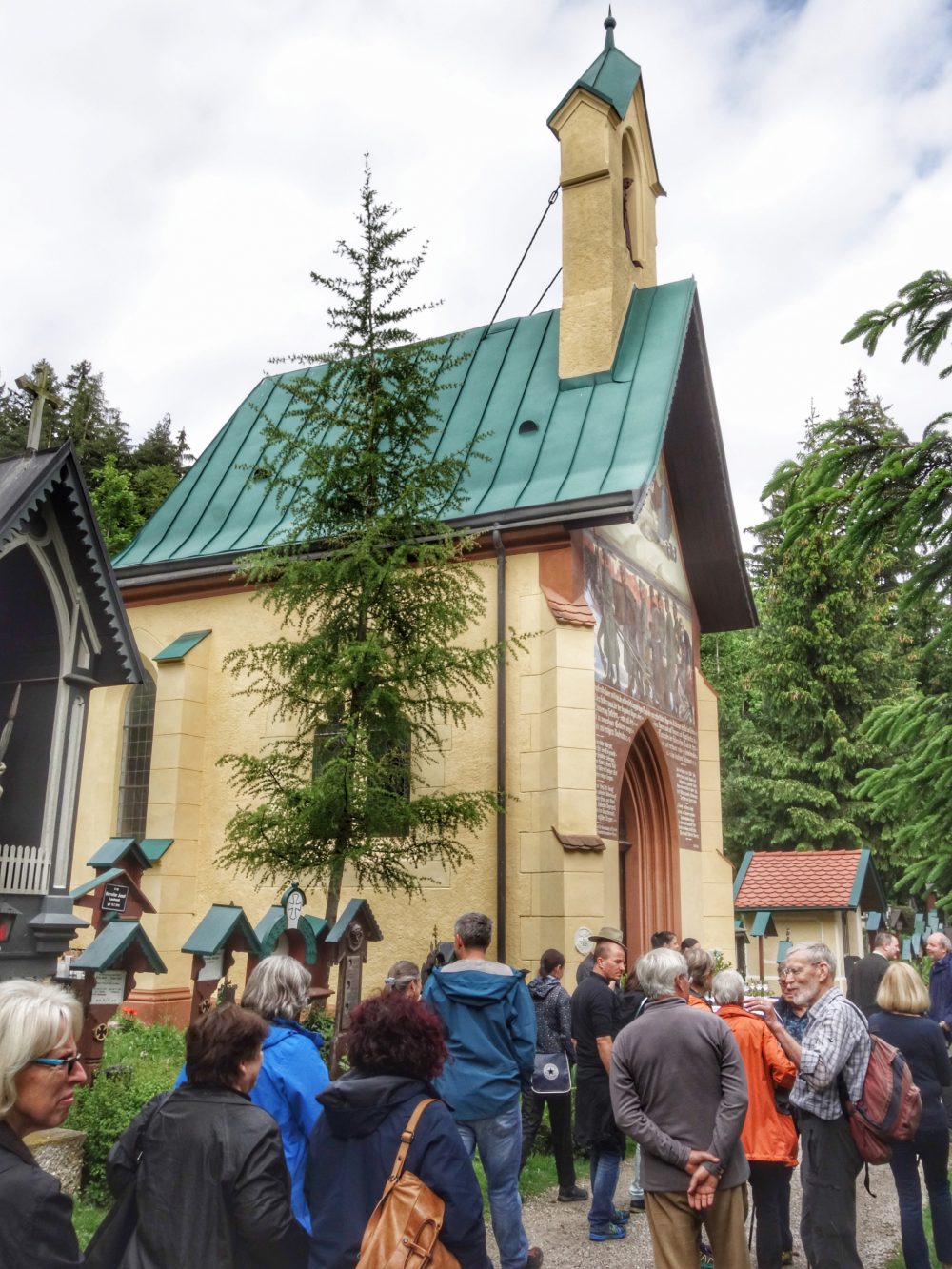
-
Die Große-Kreuz-Kapelle am Tummelplatz.
-
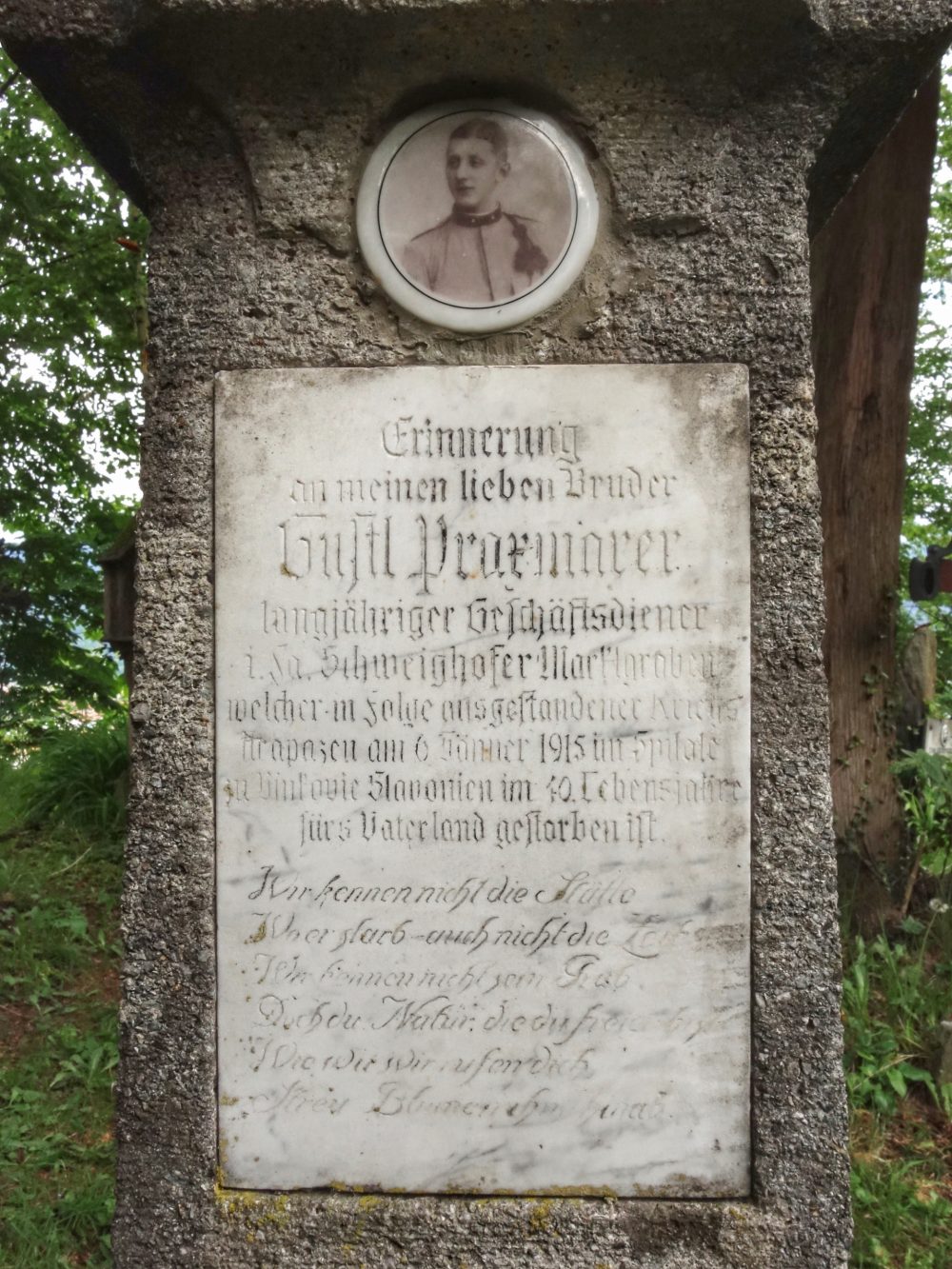
-
Grabinschrift
A military cemetery becomes a jewel
The fact that the memorial Tummelplatz presents itself today in such a good, almost beautiful condition is the work of an association that experienced a true rebirth a few years ago. For more than 60 years, the memorial has been looked after by the “Verwaltungs- und Betreuungsverein der Landesgedächtnisstätte Tummelplatz Amras-Innsbruck”. Citizens of Amras and Innsbruck took heart and, with the support of the public authorities, began to care for the Tummelplatz, including the five chapels, with great expenditure of time and even more devotion. I am not exaggerating when I call the place a “gem”. A forest cemetery with a view of Innsbruck, with graves tended by flowers and neat grave crosses.
The “romping place preservation association”
“With the temporal distance from the last war also the intensity of the grave care decreased”, chairman Hans Zimmermann explains the activities of his association. Nature took over the memorial more and more. Today, the almost 300 members who participate in the preservation of the site ensure that it is “worth seeing”. “Whether mowing the lawn, sweeping up leaves or watering flowers, in addition to “seasoned members,” young people are also very active with us,” Zimmermann is pleased to say. After all, there are 500 flowerbeds and the green spaces to maintain even in the dry times of a summer, for which an average of 20 people are needed.
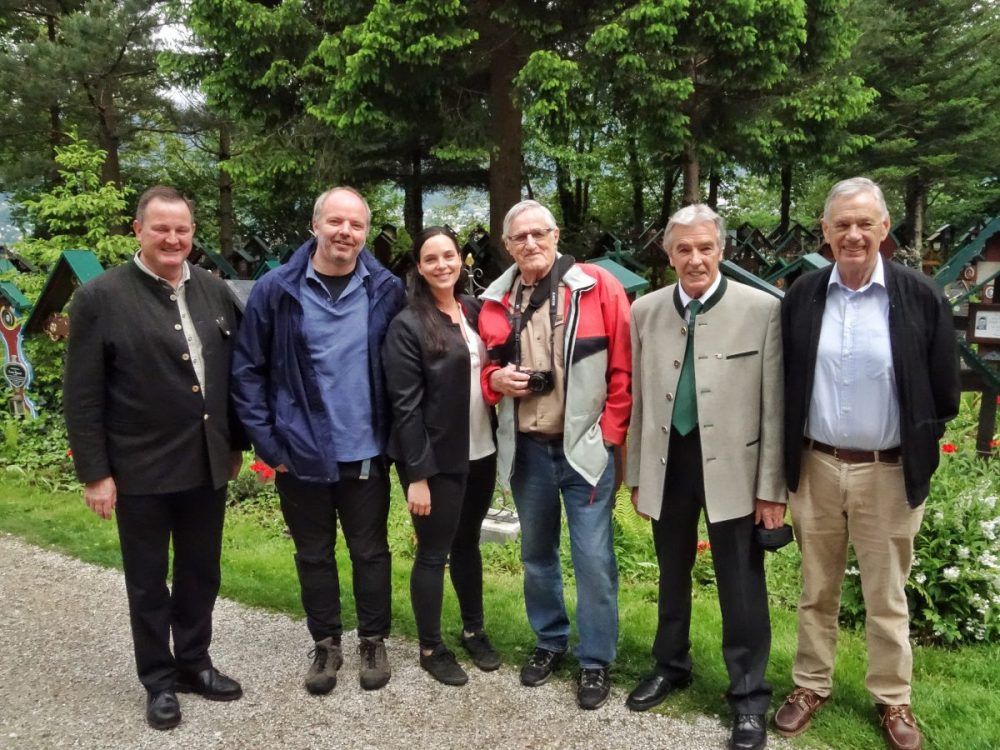 The board of the preservation association has managed to turn the Tummelplatz into a much visited memorial place. From left to right: chairman Hans Zimmermann, city archivist DDr. Lukas Morscher, Julia Zimmermann, Herbert Edenhauser, Julius Troniarsky and Christian Haager.
The board of the preservation association has managed to turn the Tummelplatz into a much visited memorial place. From left to right: chairman Hans Zimmermann, city archivist DDr. Lukas Morscher, Julia Zimmermann, Herbert Edenhauser, Julius Troniarsky and Christian Haager.
Commemoration becomes a reminder
The memorial “Tummelplatz” is divided into six ‘grave fields’. There are graves from the French wars next to memorial graves for the fallen of the Isonzo battle. Or of those soldiers who fell in the Dolomites. I read many of the grave signs, looked at the pictures of the dead soldiers. ‘Missing in Stalingrad’, fallen in Kursk’, ‘died in Yugoslavia’. Barely 20 years old, many found death in the most brutal way. Burned up in the battles of the Habsburg monarchy or the criminal German Reich. Sometimes the young men are called ‘heroes’ on the inscriptions on the crosses. For me this is an expression of perverted patriotism. Especially tragic for me are those memorial graves where several brothers of one and the same family are commemorated. Here a memorial cemetery finally becomes a memorial against the delusion of war.
-
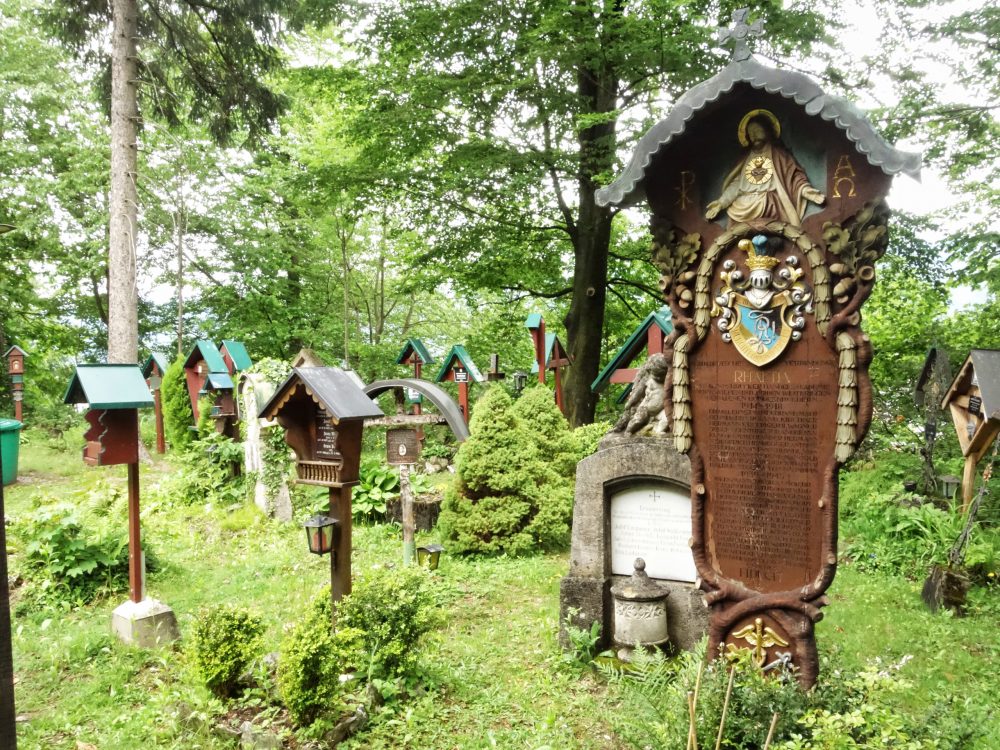
-
Grabkreuze am Tummelplatz
-
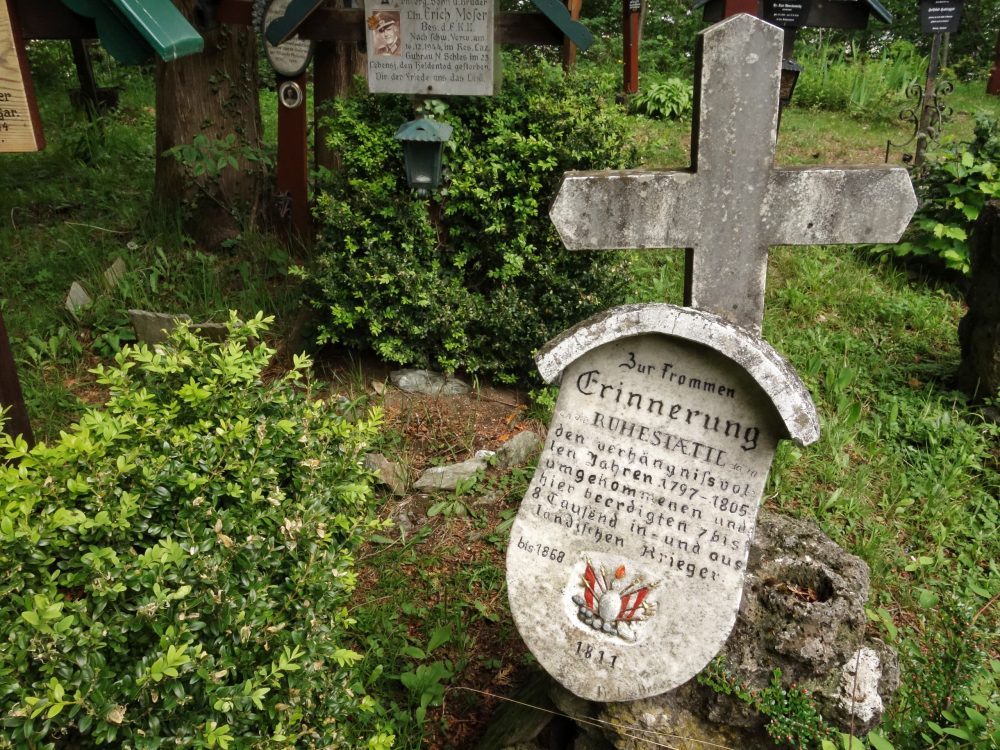
-
Die ältesten Gräber am Tummelplatz
The Tummelplatz becomes a pilgrimage destination
The fact that a miraculous healing had taken place at the Tummelplatz is an important reason why this memorial place is known everywhere in Tyrol. It had been on May 19, 1811, when at the grave of the “Unknown Soldier” the “9-year-old Pfaffenhofen farm boy Josef Seiler regained the use of the lost language”. What had triggered a real rush to the stomping ground, as is reported. Thousands of pilgrims visited the memorial site.
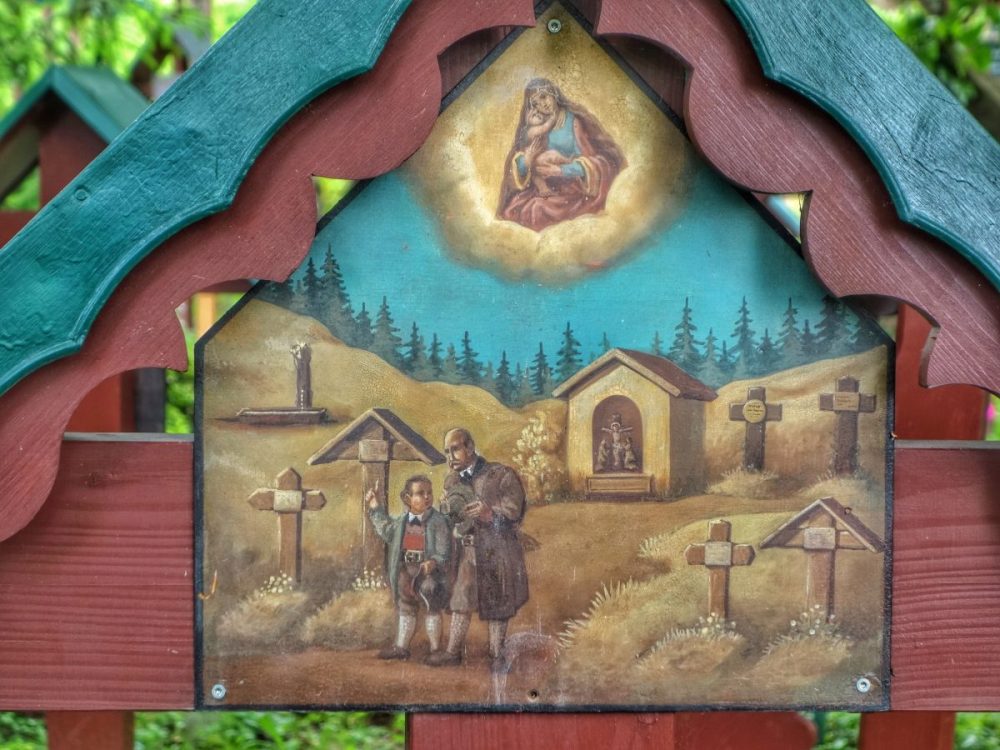 The commemorative inscription: the father with his son, in the background the Lourdes Chapel.
The commemorative inscription: the father with his son, in the background the Lourdes Chapel.
Today the complex is a place of quiet remembrance but also of recreation. Innsbruck connoisseurs love the unique view of Innsbruck, one of the most beautiful, according to many.
My Tip:
The best way to reach the Tummelplatz is by public transport: bus 4134 and line 6 of the streetcar.
City transport IVB
Regional lines VVT







